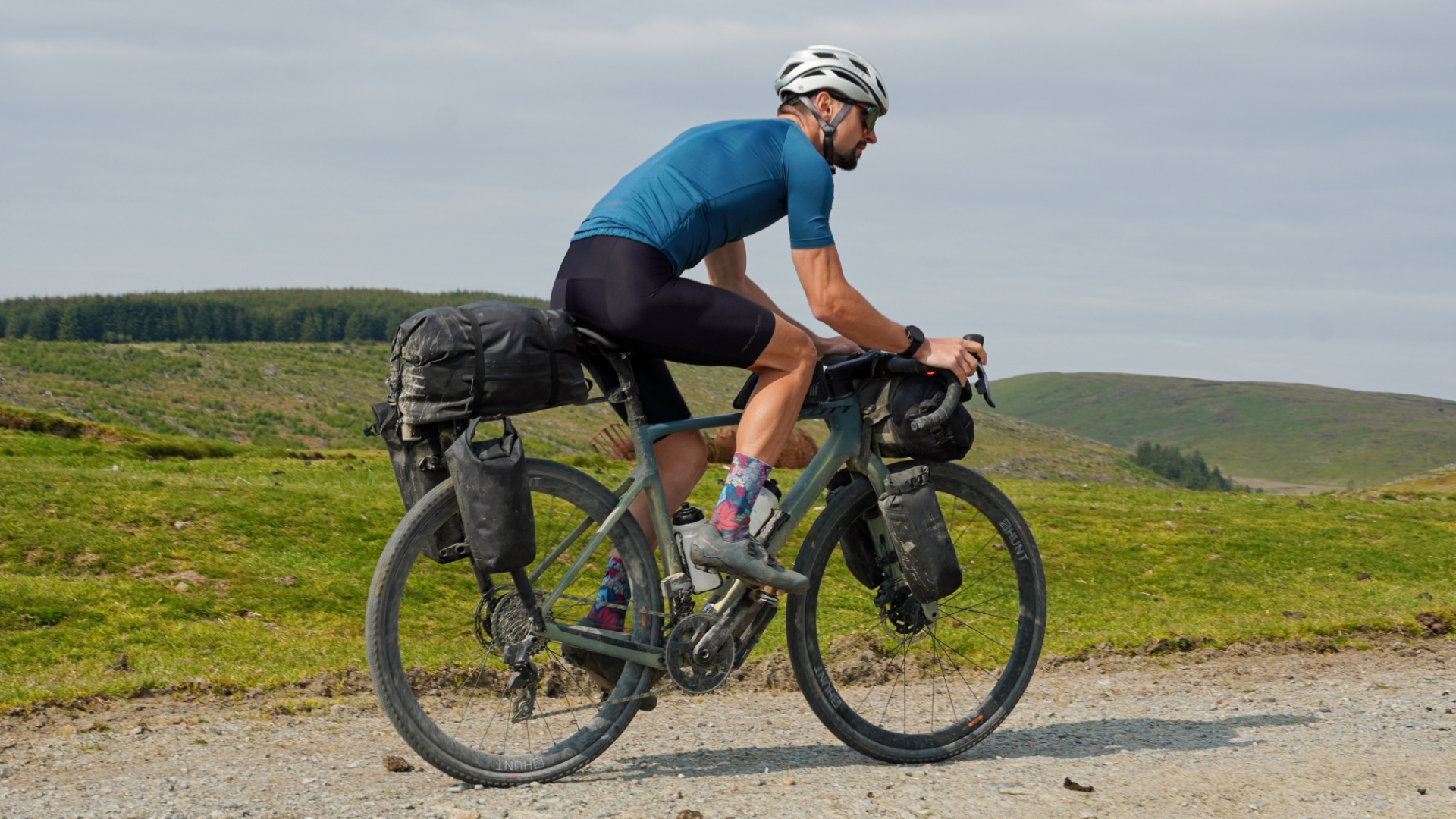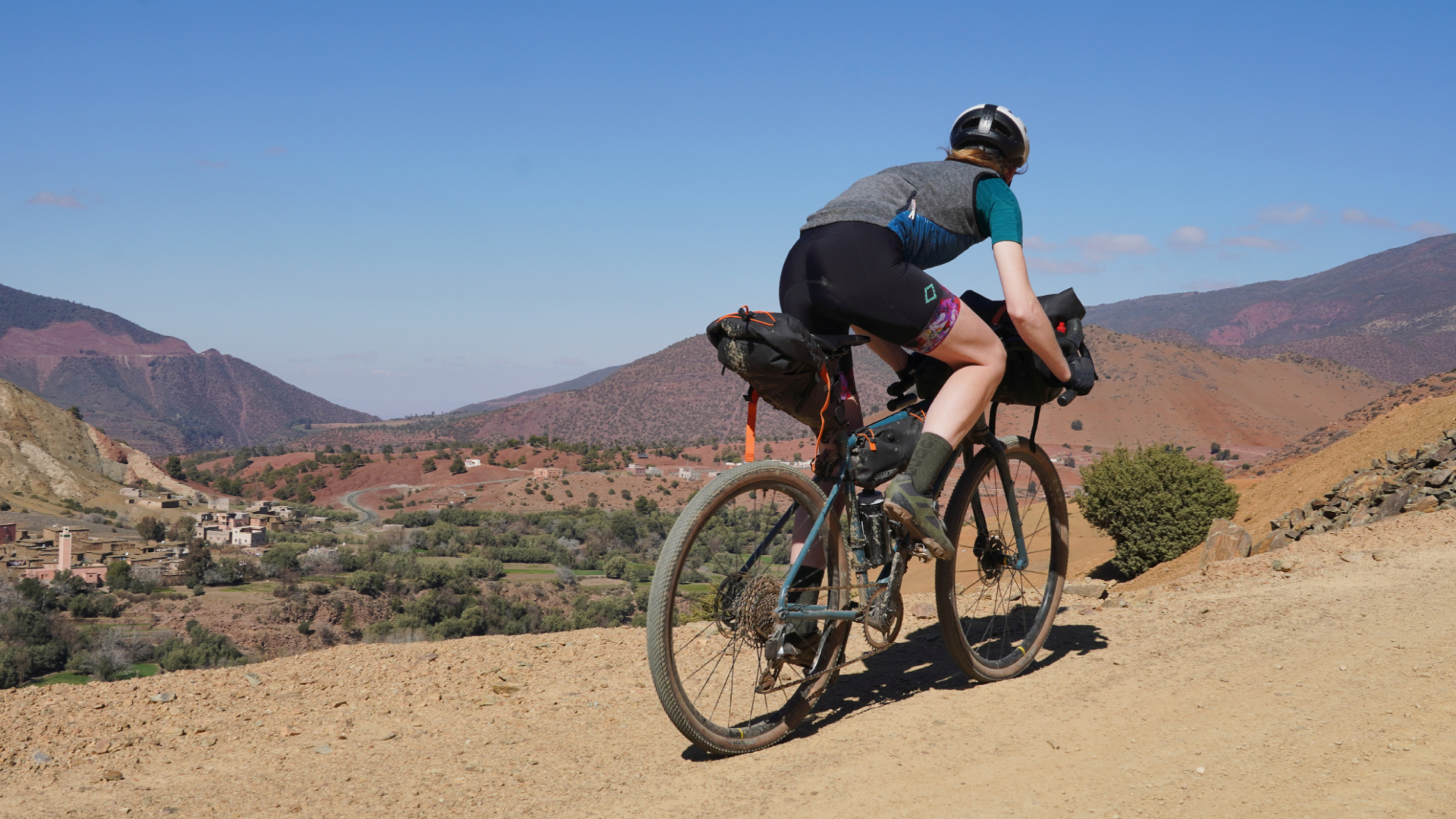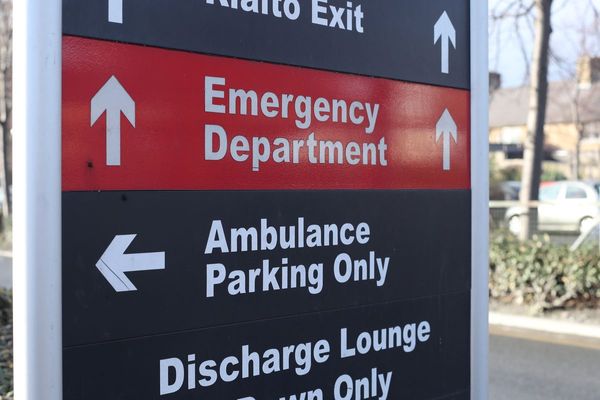
“One of the most important days of my life was when I learned to ride a bicycle.” Not my words, dear reader, but those of Micheal Palin. And few people are better travelled than the co-founder of Monty Python’s Flying Circus.
We’re not suggesting you saddle up and cycle Full Circle, pedal Pole to Pole or ride around the world in 80 days. But, with bikepacking becoming ever more popular, and winter the perfect time to prepare for next summer's adventures, we do want to get you in the best possible shape for the two-wheeled tour of your choosing.
So, we reached out cycling coach, Jon Sharples, for his advice, as well as asking coach and rider Jasmijn Muller for her top tips.
Training for the tour
Start training at least eight weeks before your departure and look to train on the terrain you’re going to be touring on. Include rides of two to four hours every week. Hills are inevitable, so it’s a savvy move to include some VO2 max intervals to raise the ceiling on your fitness. You should also supplement your training with some low-cadence strength sessions where you’re turning the pedals at 65rpm or slower. This can be done at Zone 2 and can be broken into five, 10 or 15-minute intervals. The added torque bolsters not only aerobic fitness but adds extra muscle-fibre to better equip you for the tour’s undulations. It is equally important not to neglect strength training in the gym or at home: regularly do squats and lunges to improve posture and power on the bike. Lastly, stretching or yoga will help you avoid injuries and keep your muscles limber for long days in the saddle.
Essential equipment
Getting a proper bike-fit can minimise the chance of trip-jeopardising pains. Decent bibshorts (see our guides on the best bibshorts for men and the best bibshorts for women) will keep your hindquarters happy; and comfortable cycling shoes with no hot spots are essential
Fuel your tour
Enjoy real food but carry a gel or two for emergencies. Take two bottles, and obey your thirst to stay hydrated.
Mapping your route
Use cycling apps such as Komoot or RideWithGPS to design scenic, bike-friendly routes, and be mindful of elevation gain. Avoid busy roads where possible, and plan for daily rest stops. If possible, download maps for offline use. With the right level of planning, you’ll be well-prepared to enjoy your bikepacking or touring trip to the fullest
Do less of this...
- Max effort: Reduce the frequency of Z6 and sprint sessions in the lead-up to your excursion. While they are a vital part of most riders’ training schedules, max efforts aren’t necessary for successful bikepacking day after day.
- Discomfort dismissing: Don’t neglect your pressure points. Thoroughly test your shoes and bibshorts beforehand and remember that a poor choice of saddle or bars could introduce tour-ending niggles over long distances
- Sweet synthetics: Boring chews and energy gels can take something of a backseat for this sort of riding. You’re on tour, so schedule stops for elevenses, lunch and afternoon tea. And remember: don’t rush, you’re on holiday!
- Data fixation: Head units are for displaying maps for navigation purposes or for tracking your mileage. Ignore your speed, power, heart rate or any other metric you normally keep tabs on. This is not a race. Have fun!
Do less of this...
- Long endurance rides: Long rides are a great way to condition your body to long miles in the saddle and build a big aerobic base. For this reason, it’s important to factor in one big ride a week to prime yourself for the demands of your tour
- Strength training: Resistance work will help to toughen your core, making you more stable on the bike and less susceptible to injury. Squats and bodyweight exercises can be done either at home or in the gym.
- Terrain specific riding: Training on the terrain you’re planning to ride on will help you build the specific skills you will need, while making sure your bike is correctly spec’d and geared for the tour you’ve planned.
- Route prep: Use ‘street view’ on Google maps as a tool to recce roads so that already have a good idea of what to expect before arriving. While you are out on the open road, be wary that off-grid locations don’t enjoy 4G coverage
Jasmijn Muller's top tips

How should an amateur ensure they are fit enough for a multi-day cycling bikepacking trip? I suggest preparing for an average day of your trip, whether it’s 60km or longer. Start by comfortably riding the expected daily distance, then simulate the multi-day experience by riding back-to-back days on weekends. For trips of over three days, take advantage of longer holidays such as Easter for consecutive rides, balancing overload and recovery. It’s not just physical strength but managing nutrition, contact points – hands, feet, seat – and sleep deprivation that matters.
Where do bikepacking cyclists most commonly go wrong? Training should mimic daily mileage and repetitive train. The shock comes from riding after a night’s sleep with lingering muscle fatigue. Practise early starts or shorter sleep cycles to simulate this. Also, I recommend working with a professional bike-fitter to map saddle pressure points, which can prevent saddle sores. Strength training helps prevent back pain, and stretching tight quads and hip flexors while strengthening glutes and hamstrings helps improve posture and balance muscle groups
How can riders prevent injury problems on long rides? Regularly check your posture during rides – elongate the back and bend from the hips rather than hunching over. This improves power and reduces discomfort in the back, neck and hips. Vary hand positions every hour to avoid nerve compression and stand occasionally to relieve saddle pressure. Stretch during stops.
How can riders prevent saddle sores? This is a topic that I could devote hours to discussing. But a few key moves to reduce the risk of saddle sores include ensuring you have a properly set up bike, including wider tyres inflated to the correct pressure. Crucially, keep your skin clean and dry, especially in wet conditions. I’ve found that trimming rather than shaving pubic hair reduces the risk of infections, and using rainproof gear or mudguards can prevent chafing.
How to fuel for long days in the saddle? For breakfast, I always stick to real food. Examples include Greek yogurt with honey, fruits like bananas, and sometimes a boiled egg for extra protein. The focus is on building a solid carb base for sustained energy throughout the day. During long rides, I will opt for quick-digesting, low-fibre foods such as white bread.
I limit my carb intake to 50g per hour, adjusting to 60g when riding at higher intensities. Excessive fructose causes bloating, so I avoid it. My food choices include bars from my sponsor Rawvelo or homemade rice bars. I avoid fatty foods. To add interest, I always include both sweet and savoury options. As a non-chewy option, I add some softer energy pouches from Supernaturalfuel (my other sponsor).
Any hydration tips? For hydration, I prefer a hypotonic drink mix with 15g of carbs per 500ml, mostly electrolytes. Isotonic drinks have more carbs but aren’t as efficient for hydration. I generally drink to thirst, but or older athletes or during intense races, I recommend drinking according to a plan. I have a high sweat rate, so I adjust my sodium intake with salt capsules (1,000mg per dose) or high-sodium food during long races. For less intense rides, I stick with a standard hypotonic mix.







